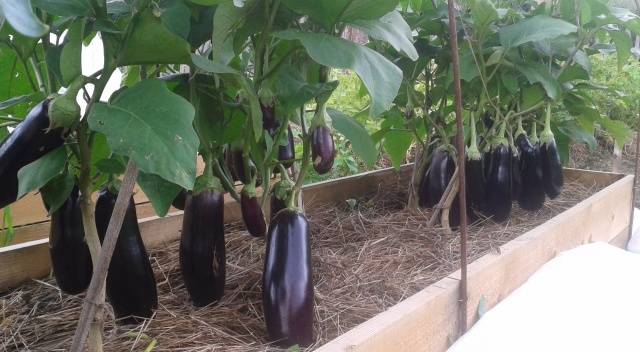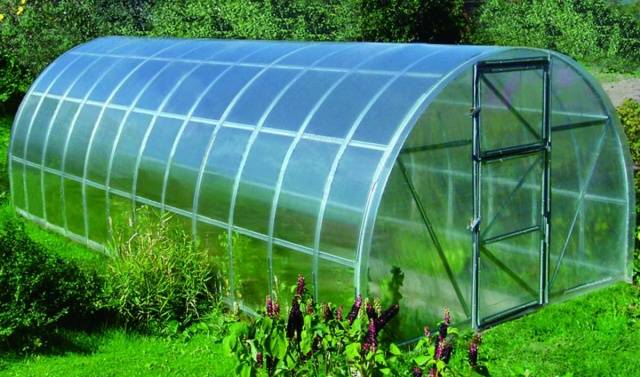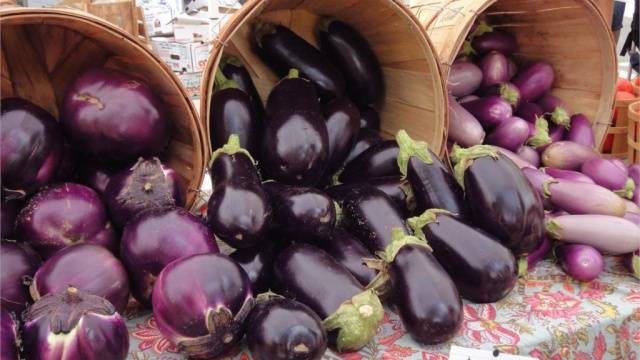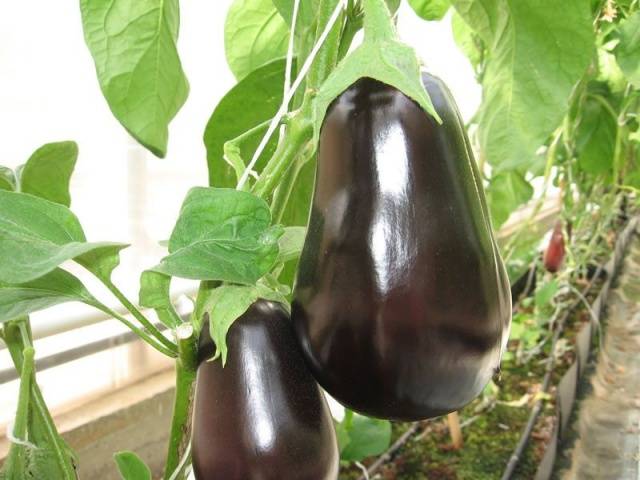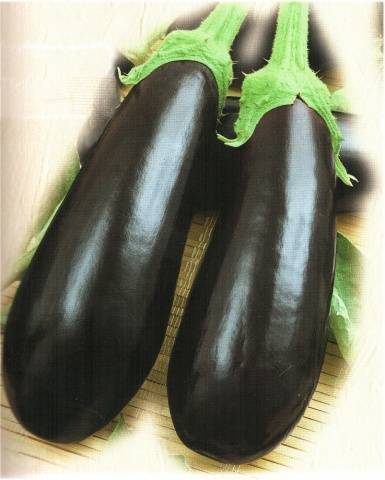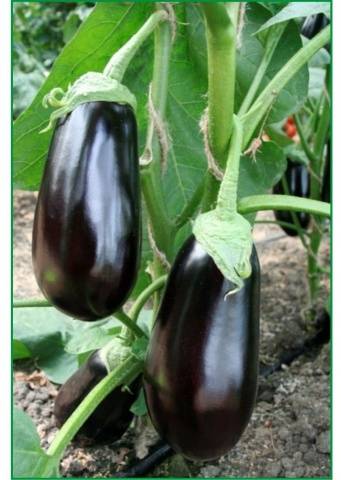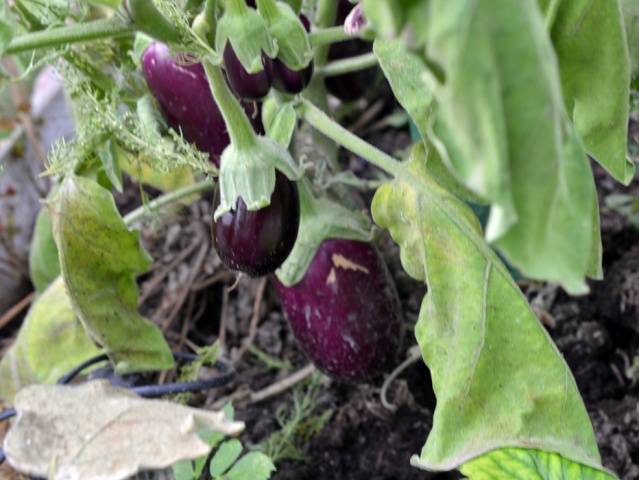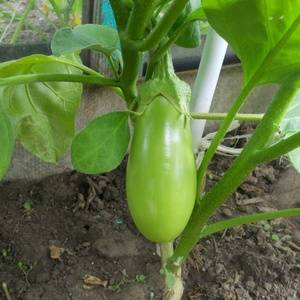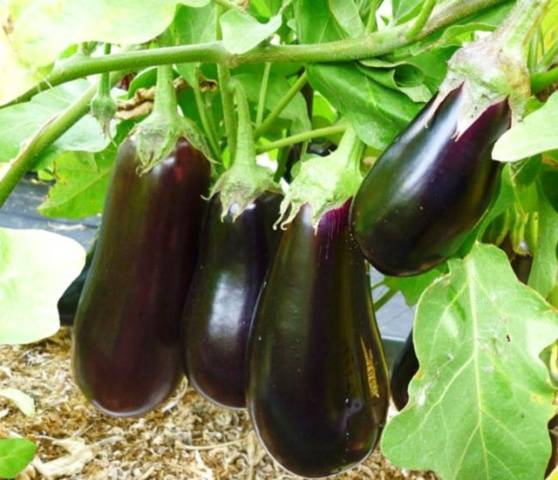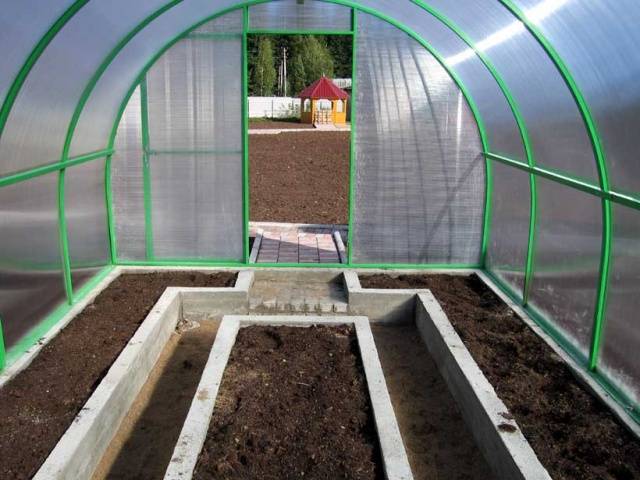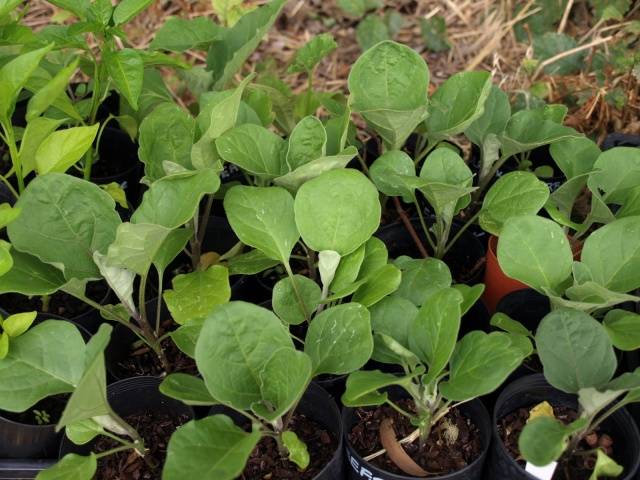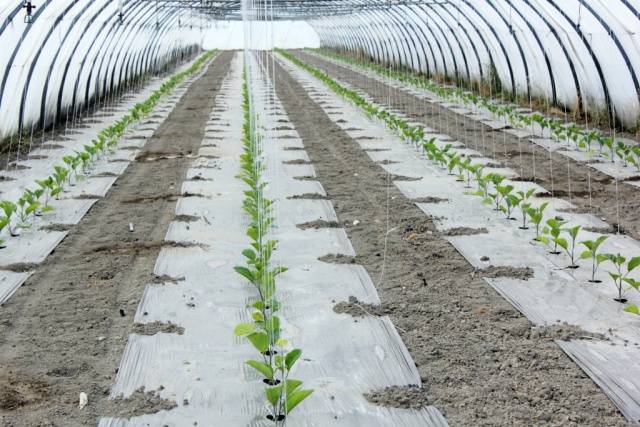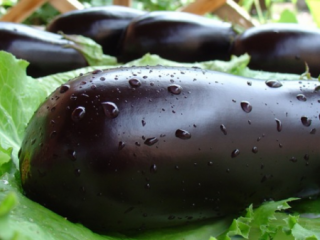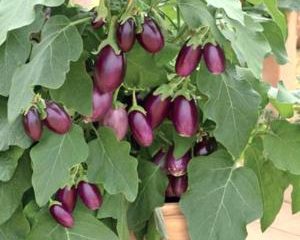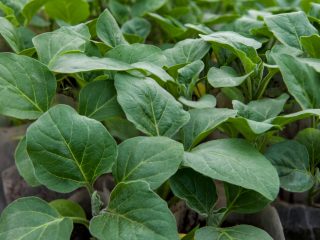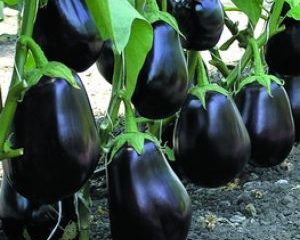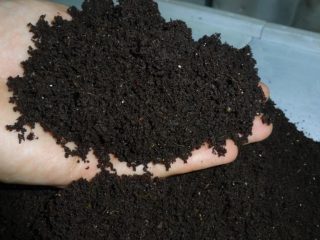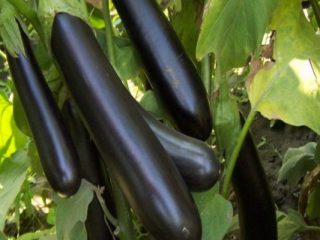Content
Eggplants are probably the most heat-loving vegetable crop, because their homeland is hot India. Just ten years ago, gardeners in most of Russia did not even dream of growing eggplants in their own gardens and dachas. Thanks to selection, today many varieties and hybrids of this vegetable have appeared, adapted to domestic weather conditions. Residents of the south and central part of Russia can now grow “little blue ones” in open ground, but northerners are better off not taking risks. To obtain consistently high yields, it is better to grow eggplants in greenhouses. This article will help you determine the best varieties of eggplant for greenhouses.
Which greenhouses are better
If previously polyethylene film and glass were used as materials for the construction of greenhouses and greenhouses, today a more worthy analogue has appeared - polycarbonate. Now most greenhouses and conservatories are built from this lightweight and inexpensive material.
Polycarbonate greenhouses have a number of advantages:
- They are very light, they can be built and repaired without much difficulty, and you can even do it alone.
- Polycarbonate has low thermal conductivity, so it retains warm air well inside the greenhouse, while at the same time keeping cold out.
- The material has sufficient transparency for the penetration and dispersion of sunlight.
- Polycarbonate is more durable than glass and film and cannot be injured.
- It has a long service life; the greenhouse does not need to be disassembled for the winter.
All this speaks in favor of polycarbonate greenhouses, which is why they have become so widespread.
Which eggplant varieties are suitable for growing in greenhouses?
To prevent temperature fluctuations from harming fragile and capricious eggplants, it is safest to plant seeds in greenhouses made of polycarbonate or other material.
Planting in closed ground helps to increase the yield, since eggplant varieties for a polycarbonate greenhouse are the most productive.
After all, most often, hybrids are used - they do not need pollination, tolerate transplantation better, and are resistant to diseases. Of course, such plants require more careful care; they require regular watering at least once a week, fertilizing (three times during the entire growing season), pinching, pinching, tying, and so on.
In principle, any variety of eggplant is suitable for growing in a greenhouse. Experienced gardeners claim that for indoor soil it is better to use seeds of early and mid-ripening varieties - this way the vegetables will appear much earlier and ripen faster.
"Nutcracker"
One of the mid-early varieties with a fairly high yield - up to 6 kg of eggplants can be obtained from one square meter of land.This yield is ensured by a large number of ovaries, because even at the tops of the bushes of this variety buds appear.
The plant is spreading with fairly high bushes - up to 90 cm. Ripe fruits have a very dark color, their shape is oval, the diameter is large, and the average length is up to 15 cm. The weight of one eggplant of the "Nutcracker" variety often reaches 0.5 kg. The taste is also excellent - the vegetable has white and tender flesh. The fruits tolerate transportation well and are characterized by “keeping quality”, without losing their elasticity and presentation over time.
This hybrid is intended for growing by seedling method; the plants are transferred to a polycarbonate greenhouse in late spring or early summer. The first fruits can be obtained already on the 40th day after planting the seedlings.
“The Nutcracker” does not require any complex care; all it needs is warmth and humidity. Mineral fertilizers can greatly increase the yield of eggplants of this variety.
"Bagheera"
Another mid-early hybrid that produces high yields. It usually takes about 110 days from sowing the seeds to the appearance of the first eggplants. The "Baghira" variety is not affected by dangerous diseases, but requires comfortable conditions - constant temperature and humidity.
With such a microclimate in a greenhouse, you can get up to 14 kg of eggplants from each square meter of area.
The hybrid was bred specifically for small greenhouses and greenhouses; the bushes and root system of the plants are compact, which allows them to be grown in shallow containers with substrate.
Eggplants grow small, their weight is about 240 grams. Their shape is oval, slightly elongated, and the color is dark purple. The pulp of this variety is tender, light green in color.Young eggplants have absolutely no bitterness, but untimely harvesting leads to the appearance of this unpleasant aftertaste.
The fruits are used for cooking, pickling and preservation.
"Baikal"
Mid-season greenhouse variety of eggplant. Compared to other varieties, it stands out for its high growth - the bushes reach 1200 cm in height. For maximum yield (8 kg per meter), it is necessary to maintain constant humidity in the greenhouse with this eggplant. Otherwise, it is very unpretentious and disease resistant.
The fruits usually appear on the 110th day after sowing the seeds. Their shape is pear-shaped, with a slight curve. The weight of one Baikal variety eggplant reaches 400 grams. The peel is dark purple. The pulp has a light green tint and does not contain bitterness. Vegetables tolerate transportation well and can be used for canning.
"Joker"
Cultivation of this ultra-early variety brings very abundant harvests. The fact is that on the “Balagura” bushes the ovary is formed in the form of brushes, each of which contains 5-7 fruits. The first vegetables appear already on the 85th day after planting the seeds.
Eggplants grow small (80-100 grams) and are distinguished by an interesting spherical shape and a bright purple hue. If crops of other varieties are planted nearby, the color may change to dark purple.
The taste of eggplants of the “Balagur” variety is characteristic, pronounced, and the flesh is white and tender, the skin is smooth and shiny.
The plants are quite tall - up to 1500 cm, so they need to be tied up. Proper tying is mandatory in this case, otherwise the bushes may break off. After all, about 100 eggplants ripen on each of them. The plant is resistant to most diseases.
"Fabina"
The fruits of the Fabina hybrid appear very quickly and early; the first vegetables can be picked within 70 days after sowing the seeds. Growing this hybrid is possible both in greenhouses and in open ground. The plant is quite unpretentious, the bushes are compact and of small height (45-50 cm).
The ovary appears simultaneously; 7-9 eggplants can be removed from each bush at a time. The total yield of the variety reaches 8 kg per square meter.
The plant is resistant to most diseases, including the most dangerous - spider mites and verticillium. Vegetables can be stored for a long time and tolerate transportation well.
The fruits have a very dark, sometimes even black, tint. Their skin is glossy and their shape is elongated. The weight of eggplants is average - up to 220 grams, and the length is about 20 cm. When picked in time, the flesh is dense, without seeds, and has a soft green tint. The taste of eggplant of the Fabina variety is unusual, slightly mushroomy. Therefore, the fruits are often used to prepare various snacks and salads, but they can also be successfully preserved and pickled.
"Black Beauty"
Another variety for growing in greenhouse conditions is the mid-season “Black Beauty”. The plant produces some of the highest yields - up to 13 kg per meter. This variety can also be grown in open ground, but only in southern regions with stable temperatures.
Eggplants are immune to dangerous diseases and bear fruit best in rich, fertile soil.This vegetable does not require sunlight; unlike other varieties, “Black Beauty” feels great in partial shade and even in the shade. The main thing a plant needs is moisture.
The bushes grow low - up to 60 cm, and are distinguished by leaves and stems covered with thorns. The fruits are pear-shaped and light in weight - up to 250 grams.
The color of the peel is deep purple. The pulp has a slightly greenish color (sometimes yellow) and a delicate taste without bitterness. Vegetables of the “Black Beauty” variety are excellent for sale; they retain their presentation and freshness for a long time.
"Alenka"
The hybrid is an early ripening one and is intended for growing indoors. This eggplant has an unusual green skin. The fruits appear on the 104th day after sowing the seeds. They are cylindrical in shape and large in size; the weight of one eggplant reaches 350 grams.
The bushes are low, characterized by dense foliage and the absence of thorns on the stems and calyxes. The fruits are excellent for preparing various dishes and canning; they have absolutely no bitterness. The yield of the hybrid is quite high - up to 7.5 kg of fresh vegetables are obtained from one meter of land.
"City F1"
A representative of mid-season hybrids for growing in a greenhouse is the “City F1” eggplant. This variety is a real giant. The height of the bushes can reach three meters, so the size of the greenhouse must be appropriate. The bushes are spreading and have many fruits.
The fruits themselves are also quite “powerful”, their weight reaches 0.5 kg, and their length is 30 cm. The shape of the “Gorodovoy” eggplants is cylindrical, and the color is dark purple. The pulp is tasty with a greenish tint. Eggplants are suitable for canning and preparing side dishes and salads.
The plant is resistant to tobacco mosaic virus. The yield of the variety reaches 7.7 kg per square meter.
How to prepare a greenhouse for planting eggplants
A polycarbonate greenhouse is not dismantled for the winter, so you can start preparing for the new season in the fall. Eggplant is very picky about the composition of the soil, so due attention must be paid to preparation. The following steps must be completed:
- remove the layer of old soil and replace it with new one;
- disinfect the soil by watering it with a solution of copper sulfate;
- perform soil deoxidation using one of the methods (wood ash, dolomite flour, lime or crushed chalk);
- Fertilize the soil generously with cow manure or compost fertilizer.
In late winter or early spring, when the supports from the greenhouse have been removed, you can dig up the soil and prepare the beds for eggplants.
The holes are made at a distance of about half a meter from each other; half a glass of wood ash can be poured into each of them.
You can plant seedlings or eggplant seeds in soil watered with a manganese solution. This plant does not really like replanting, so you need to make sure that the lump of earth is held between the roots of the seedlings.
Young eggplant seedlings are very fragile; they are carefully transferred to the ground and deepened a couple of centimeters more than they grew before.Growing seedlings is possible only at a constant air temperature of at least 18-20 degrees - cold is detrimental to eggplants.
The seedlings are ready for planting in the greenhouse when there are 5-7 large leaves on the stem and the height of the seedling is at least 20 cm.
The process of growing eggplants is quite complex and labor-intensive. Even early varieties take about three months to ripen, during which time the plant requires certain care, watering and maintaining constant warmth. But with the right approach, and even having a polycarbonate greenhouse, it is quite possible to grow early vegetables for sale.
Experienced farmers advise planting seeds of varieties with different ripening periods, so the harvest will be stable, and fresh vegetables will be able to please the owner until the first frost.
